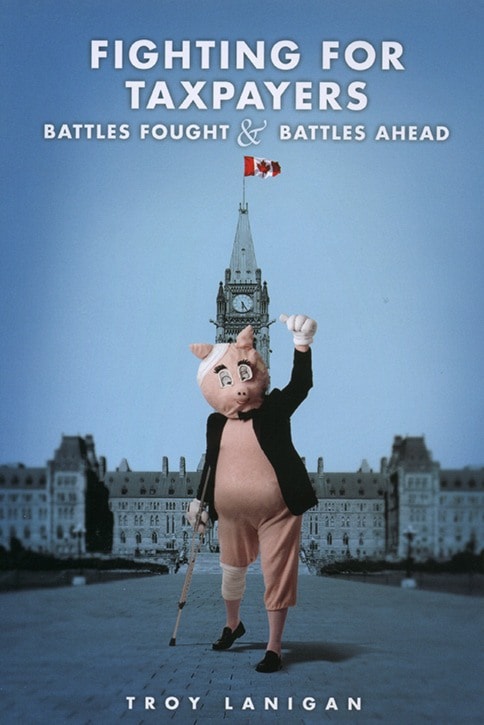If you have concerns about taxation levels or how your tax dollars are spent, you have a friend in Troy Lanigan.
The Prince Charles Secondary School grad of 1985 has gone on to gain national fame as president of the Canadian Taxpayers Federation (CTF). Now his book, Fighting for Taxpayers, reveals his history in fighting what he sees as the good fight, and the stories behind the success of the CTF.
The book coincides with the 25th anniversary of the founding of the CTF, tracing its history through the tax revolt of the mid-1990s to the unveiling of the iconic National Debt Clock to the successful campaign to reform bloated parliamentary pensions.
No dry compendium of CTF history, Fighting for Taxpayers is chock full of anecdotes about what Lanigan sees as highlights over the non-profit organization’s quarter century history.
CTF took on the controversial gun registry, concerned that the estimated $2 million cost was grossly underestimated. Even while costs skyrocketed, the Liberal government of the day persisted.
“Knowing the government was not going to budge, we took a different tack,” said Lanigan in the book. “Instead of petitioning the politicians, we petitioned the country’s auditor general, Sheila Fraser, presenting her with 14,000 signatures in 2002 requesting she audit the program. And she did.
“Cost overruns were one thing, but ‘insufficient financial information,’ Fraser discovered, revealed fully 70 per cent of the program’s funding came from ‘supplementary estimates’ with no information why the original money was insufficient.”
With pressure from the CTF increasing and reports that the registry’s true cost could hit $2 billion, Prime Minister Stephen Harper promised in 2004 that if became prime minister he would eliminate the program.
Conservative governments have also felt the wrath of the CTF. A ruckus about a pay hike for Alberta MLAs who served on committees didn’t get much traction when it was raised in 2008.
“Fast forward three-and-a-half years and the newly elected PC leader, Alison Redford, was still catching grief from angry Albertans over the pay hike,” said Lanigan. “Her response was to call in a retired judge, Justice Major, to conduct a review.
“While preparing the CTF’s submission to the review, [CTF director Scott] Hennig thought it might be compelling to see which committee met the least often and work out how much each MLA was paid per meeting. During this process, he stumbled upon the ‘standing committee on privileges, elections, standing orders and printing.’ (In retrospect, ‘privileges’ seems an apt beginning for the committee title!). This committee had not met once in 39 months. That meant each of the 21 MLAs sitting on this committee had been paid $39,000 to do absolutely nothing.”
As the scandal grew, the Alberta Liberal leader announced he was paying back the money. He was soon followed by two Wildrose MLAs. When the issue still wouldn’t go away and the Conservative Party fighting for its life in an election campaign, Redford finally announced that all of the committee members from her party would repay the money.
“While Premier Red-ford still managed to pull off a victory (with reduced seats), the ‘no-meet committee’ ensured the CTF got nearly every one of its recommendations on MLA pay implemented following the election; right down to the dollar amount for MLA pay (the CTF recommended MLAs be paid a base salary of $134,572; Justice Major set the pay at $134,000).”
Lanigan’s book is a chatty, evidence-based look at one the country’s most successful watchdog organizations and will hold special appeal for taxpayers wary of waste in all levels of government.
